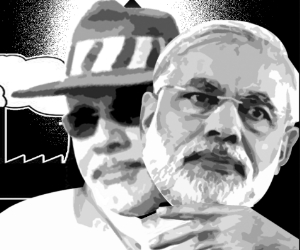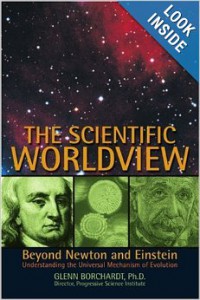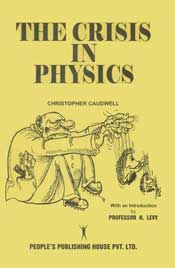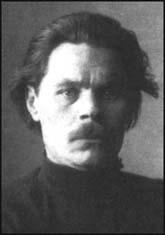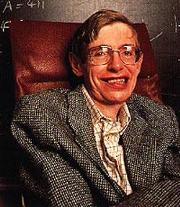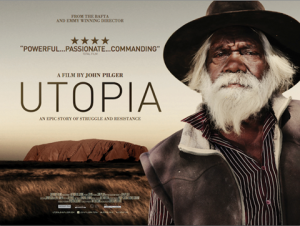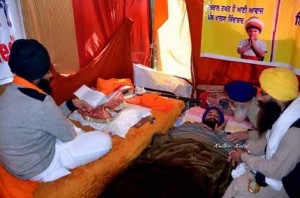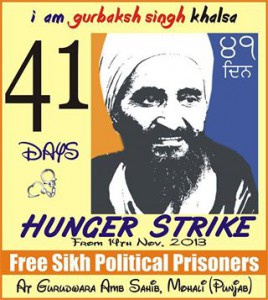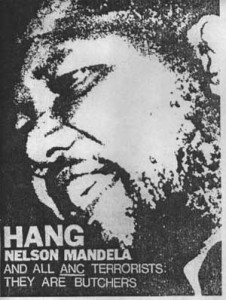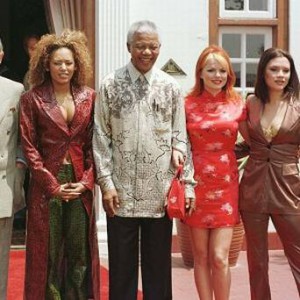
Jo Wilding
जर्नलिज्म को इतिहास का ‘पहला ड्राफ्ट’ कहा जाता है। आज से ठीक दस साल पहले अमरीका द्वारा ईराक पर हमले के समय जब अधिकांश पत्रकार अमरीकी सेना के साथ ‘Embed’ थे और अमरीका की ‘सफलता’ की खबरे दे रहे थे तो कुछ पत्रकार अपनी जान जोखिम में डालकर उन जगहों पर अमरीकी सेना से पहले पहुंच जाते थे जहां पर अमरीकी सेना हमला करने वाली होनी थी। और हमले के वक्त वे अपनी जान की परवाह न करते हुए न सिर्फ मिनट दर मिनट अमरीकी क्रूरता की खबरे दे रहे होते थे वरन् हमले में फंसे आम नागरिकों को वहां से निकालने में भी मदद कर रहे होते थे। ‘Jo Wilding’ ऐसी ही एक पत्रकार हैं। जिन्होने 10 साल पहले आज ही के दिन ईराक के फालूजा शहर से आंखों देखा हाल बयां किया था और दुनिया को पता चला कि साम्राज्यवादी ताकतों के लिए न सिर्फ उनकी असीमित सैन्य क्षमता उनके अस्तित्व के लिए आवश्यक है वरन् मुख्यधारा के मीडिया द्वारा रचा गया झूठ भी उनके अस्तित्व के लिए उतना ही आवश्यक है। ‘जाॅन पिल्जर’ की मशहूर किताब ‘TELL ME NO LIES’ में Jo Wilding का यह महत्वपूर्ण लेख संकलित है। वही से हम इसे साभार ले रहे हैं।
Trucks, oil tankers, tanks are burning on the highway
east to Falluja. A stream of boys and men goes to and
from a lorry that’s not burnt, stripping it bare. We
turn onto the back roads through Abu Ghraib, Nuha and
Ahrar singing in Arabic, past the vehicles full of
people and a few possessions, heading the other way,
past the improvised refreshment posts along the way
where boys throw food through the windows into the bus
for us and for the people inside still inside Falluja.
The bus is following a car with the nephew of a local
sheikh and a guide who has contacts with the Mujahedin
and has cleared this with them. The reason I’m on the
bus is that a journalist I knew turned up at my door
at about 11 at night telling me things were desperate
in Falluja, he’d been bringing out children with their
limbs blown off, the US soldiers were going around
telling people to leave by dusk or be killed, but then
when people fled with whatever they could carry, they
were being stopped at the US military checkpoint on
the edge of town and not let out, trapped, watching
the sun go down.
He said aid vehicles and the media were being turned
away. He said there was some medical aid that needed
to go in and there was a better chance of it getting
there with foreigners, westerners, to get through the
american checkpoints. The rest of the way was secured
with the armed groups who control the roads we’d
travel on. We’d take in the medical supplies, see what
else we could do to help and then use the bus to bring
out people who needed to leave.
I’ll spare you the whole decision making process, all
the questions we all asked ourselves and each other,
and you can spare me the accusations of madness, but
what it came down to was this: if I don’t do it, who
will? Either way, we arrive in one piece.
We pile the stuff in the corridor and the boxes are
torn open straightaway, the blankets most welcomed.
It’s not a hospital at all but a clinic, a private
doctor’s surgery treating people free since air
strikes destroyed the town’s main hospital. Another
has been improvised in a car garage. There’s no
anaesthetic. The blood bags are in a drinks fridge and
the doctors warm them up under the hot tap in an
unhygienic toilet.
Screaming women come in, praying, slapping their
chests and faces. Ummi, my mother, one cries. I hold
her until Maki, a consultant and acting director of
the clinic, brings me to the bed where a child of
about ten is lying with a bullet wound to the head. A
smaller child is being treated for a similar injury in
the next bed. A US sniper hit them and their
grandmother as they left their home to flee Falluja.
The lights go out, the fan stops and in the sudden
quiet someone holds up the flame of a cigarette
lighter for the doctor to carry on operating by. The
electricity to the town has been cut off for days and
when the generator runs out of petrol they just have
to manage till it comes back on. Dave quickly donates
his torch. The children are not going to live.
“Come,” says Maki and ushers me alone into a room
where an old woman has just had an abdominal bullet
wound stitched up. Another in her leg is being
dressed, the bed under her foot soaked with blood, a
white flag still clutched in her hand and the same
story: I was leaving my home to go to Baghdad when I
was hit by a US sniper. Some of the town is held by US
marines, other parts by the local fighters. Their
homes are in the US controlled area and they are
adamant that the snipers were US marines.
Snipers are causing not just carnage but also the
paralysis of the ambulance and evacuation services.
The biggest hospital after the main one was bombed is
in US territory and cut off from the clinic by
snipers. The ambulance has been repaired four times
after bullet damage. Bodies are lying in the streets
because no one can go to collect them without being
shot.
Some said we were mad to come to Iraq; quite a few
said we were completely insane to come to Falluja and
now there are people telling me that getting in the
back of the pick up to go past the snipers and get
sick and injured people is the craziest thing they’ve
ever seen. I know, though, that if we don’t, no one
will.
He’s holding a white flag with a red crescent on; I
don’t know his name. The men we pass wave us on when
the driver explains where we’re going. The silence is
ferocious in the no man’s land between the pick up at
the edge of the Mujahedin territory, which has just
gone from our sight around the last corner and the
marines’ line beyond the next wall; no birds, no
music, no indication that anyone is still living until
a gate opens opposite and a woman comes out, points.
We edge along to the hole in the wall where we can see
the car, spent mortar shells around it. The feet are
visible, crossed, in the gutter. I think he’s dead
already. The snipers are visible too, two of them on
the corner of the building. As yet I think they can’t
see us so we need to let them know we’re there.
“Hello,” I bellow at the top of my voice. “Can you
hear me?” They must. They’re about 30 metres from us,
maybe less, and it’s so still you could hear the flies
buzzing at fifty paces. I repeat myself a few times,
still without reply, so decide to explain myself a bit
more.
“We are a medical team. We want to remove this wounded
man. Is it OK for us to come out and get him? Can you
give us a signal that it’s OK?”
I’m sure they can hear me but they’re still not
responding. Maybe they didn’t understand it all, so I
say the same again. Dave yells too in his US accent. I
yell again. Finally I think I hear a shout back. Not
sure, I call again.
“Hello.”
“Yeah.”
“Can we come out and get him?”
“Yeah,”
Slowly, our hands up, we go out. The black cloud that
rises to greet us carries with it a hot, sour smell.
Solidified, his legs are heavy. I leave them to Rana
and Dave, our guide lifting under his hips. The
Kalashnikov is attached by sticky blood to is hair and
hand and we don’t want it with us so I put my foot on
it as I pick up his shoulders and his blood falls out
through the hole in his back. We heave him into the
pick up as best we can and try to outrun the flies.
I suppose he was wearing flip flops because he’s
barefoot now, no more than 20 years old, in imitation
Nike pants and a blue and black striped football shirt
with a big 28 on the back. As the orderlies form the
clinic pull the young fighter off the pick up, yellow
fluid pours from his mouth and they flip him over,
face up, the way into the clinic clearing in front of
them, straight up the ramp into the makeshift morgue.
We wash the blood off our hands and get in the
ambulance. There are people trapped in the other
hospital who need to go to Baghdad. Siren screaming,
lights flashing, we huddle on the floor of the
ambulance, passports and ID cards held out the
windows. We pack it with people, one with his chest
taped together and a drip, one on a stretcher, legs
jerking violently so I have to hold them down as we
wheel him out, lifting him over steps.
The hospital is better able to treat them than the
clinic but hasn’t got enough of anything to sort them
out properly and the only way to get them to Baghdad
on our bus, which means they have to go to the clinic.
We’re crammed on the floor of the ambulance in case
it’s shot at. Nisareen, a woman doctor about my age,
can’t stop a few tears once we’re out.
The doctor rushes out to meet me: “Can you go to fetch
a lady, she is pregnant and she is delivering the baby
too soon?”
Azzam is driving, Ahmed in the middle directing him
and me by the window, the visible foreigner, the
passport. Something scatters across my hand,
simultaneous with the crashing of a bullet through the
ambulance, some plastic part dislodged, flying through
the window.
We stop, turn off the siren, keep the blue light
flashing, wait, eyes on the silhouettes of men in US
marine uniforms on the corners of the buildings.
Several shots come. We duck, get as low as possible
and I can see tiny red lights whipping past the
window, past my head. Some, it’s hard to tell, are
hitting the ambulance I start singing. What else do
you do when someone’s shooting at you? A tyre bursts
with an enormous noise and a jerk of the vehicle.
I’m outraged. We’re trying to get to a woman who’s
giving birth without any medical attention, without
electricity, in a city under siege, in a clearly
marked ambulance, and you’re shooting at us. How dare
you?
How dare you?
Azzam grabs the gear stick and gets the ambulance into
reverse, another tyre bursting as we go over the ridge
in the centre of the road , the sots still coming as
we flee around the corner. I carry on singing. The
wheels are scraping, burst rubber burning on the road.The men run for a stretcher as we arrive and I shake
my head. They spot the new bullet holes and run to see
if we’re OK. Is there any other way to get to her, I
want to know. La, maaku tarieq. There is no other way.
They say we did the right thing. They say they’ve
fixed the ambulance four times already and they’ll fix
it again but the radiator’s gone and the wheels are
buckled and se’s still at home in the dark giving
birth alone. I let her down.
We can’t go out again. For one thing there’s no
ambulance and besides it’s dark now and that means our
foreign faces can’t protect the people who go out with
us or the people we pick up. Maki is the acting
director of the place. He says he hated Saddam but now
he hates the Americans more.
We take off the blue gowns as the sky starts exploding
somewhere beyond the building opposite. Minutes later
a car roars up to the clinic. I can hear him screaming
before I can see that there’s no skin left on his
body. He’s burnt from head to foot. For sure there’s
nothing they can do. He’ll die of dehydration within a
few days.
Another man is pulled from the car onto a stretcher.
Cluster bombs, they say, although it’s not clear
whether they mean one or both of them. We set off
walking to Mr Yasser’s house, waiting at each corner
for someone to check the street before we cross. A
ball of fire falls from a plane, splits into smaller
balls of bright white lights. I think they’re cluster
bombs, because cluster bombs are in the front of my
mind, but they vanish, just magnesium flares,
incredibly bright but short-lived, giving a flash
picture of the town from above.
Yasser asks us all to introduce ourselves. I tell him
I’m training to be a lawyer. One of the other men asks
whether I know about international law. They want to
know about the law on war crimes, what a war crime is.
I tell them I know some of the Geneva Conventions,
that I’ll bring some information next time I come and
we can get someone to explain it in Arabic.
We bring up the matter of Nayoko. This group of
fighters has nothing to do with the ones who are
holding the Japanese hostages, but while they’re
thanking us for what we did this evening, we talk
about the things Nayoko did for the street kids, how
much they loved her. They can’t promise anything but
that they’ll try and find out where she is and try to
persuade the group to let her and the others go. I
don’t suppose it will make any difference. They’re
busy fighting a war in Falluja. They’re unconnected
with the other group. But it can’t hurt to try.
The planes are above us all night so that as I doze I
forget I’m not on a long distance flight, the constant
bass note of an unmanned reconnaissance drone overlaid
with the frantic thrash of jets and the dull beat of
helicopters and interrupted by the explosions.
In the morning I make balloon dogs, giraffes and
elephants for the little one, Abdullah, Aboudi, who’s
clearly distressed by the noise of the aircraft and
explosions. I blow bubbles which he follows with his
eyes. Finally, finally, I score a smile. The twins,
thirteen years old, laugh too, one of them an
ambulance driver, both said to be handy with a
Kalashnikov.
The doctors look haggard in the morning. None has
slept more than a couple of hours a night for a week.
One as had only eight hours of sleep in the last seven
days, missing the funerals of his brother and aunt
because he was needed at the hospital.
“The dead we cannot help,” Jassim said. “I must worry
about the injured.”
We go again, Dave, Rana and me, this time in a pick
up. There are some sick people close to the marines’
line who need evacuating. No one dares come out of
their house because the marines are on top of the
buildings shooting at anything that moves. Saad
fetches us a white flag and tells us not to worry,
he’s checked and secured the road, no Mujahedin will
fire at us, that peace is upon us, this eleven year
old child, his face covered with a keffiyeh, but for
is bright brown eyes, his AK47 almost as tall as he
is.
We shout again to the soldiers, hold up the flag with
a red crescent sprayed onto it. Two come down from the
building, cover this side and Rana mutters, “Allahu
akbar. Please nobody take a shot at them.”
We jump down and tell them we need to get some sick
people from the houses and they want Rana to go and
bring out the family from the house whose roof they’re
on. Thirteen women and children are still inside, in
one room, without food and water for the last 24
hours.
“We’re going to be going through soon clearing the
houses,” the senior one says.
“What does that mean, clearing the houses?”
“Going into every one searching for weapons.” He’s
checking his watch, can’t tell me what will start
when, of course, but there’s going to be air strikes
in support. “If you’re going to do tis you gotta do it
soon.”
First we go down the street we were sent to. There’s a
man, face down, in a white dishdasha, a small round
red stain on his back. We run to him. Again the flies
ave got there first. Dave is at his shoulders, I’m by
his knees and as we reach to roll him onto the
stretcher Dave’s hand goes through his chest, through
the cavity left by the bullet that entered so neatly
through his back and blew his heart out.
There’s no weapon in his hand. Only when we arrive,
his sons come out, crying, shouting. He was unarmed,
they scream. He was unarmed. He just went out the gate
and they shot him. None of them have dared come out
since. No one had dared come to get his body,
horrified, terrified, forced to violate the traditions
of treating the body immediately. They couldn’t have
known we were coming so it’s inconceivable tat anyone
came out and retrieved a weapon but left the body.
He was unarmed, 55 years old, shot in the back.
We cover his face, carry him to the pick up. There’s
nothing to cover his body with. The sick woman is
helped out of the house, the little girls around her
hugging cloth bags to their bodies, whispering, “Baba.
Baba.” Daddy. Shaking, they let us go first, hands up,
around the corner, then we usher them to the cab of
the pick up, shielding their heads so they can’t see
him, the cuddly fat man stiff in the back.
The people seem to pour out of the houses now in the
hope we can escort them safely out of the line of
fire, kids, women, men, anxiously asking us whether
they can all go, or only the women and children. We go
to ask. The young marine tells us that men of fighting
age can’t leave. What’s fighting age, I want to know.
He contemplates. Anything under forty five. No lower
limit.
It appals me that all those men would be trapped in a
city which is about to be destroyed. Not all of them
are fighters, not all are armed. It’s going to happen
out of the view of the world, out of sight of the
media, because most of the media in Falluja is
embedded with the marines or turned away at the
outskirts. Before we can pass the message on, two
explosions scatter the crowd in the side street back
into their houses.
Rana’s with the marines evacuating the family from the
house they’re occupying. The pick up isn’t back yet.
The families are hiding behind their walls. We wait,
because there’s nothing else we can do. We wait in no
man’s land. The marines, at least, are watching us
through binoculars; maybe the local fighters are too.
I’ve got a disappearing hanky in my pocket so while
I’m sitting like a lemon, nowhere to go, gunfire and
explosions aplenty all around, I make the hanky
disappear, reappear, disappear. It’s always best, I
think, to seem completely unthreatening and completely
unconcerned, so no one worries about you enough to
shoot. We can’t wait too long though. Rana’s been gone
ages. We have to go and get her to hurry. There’s a
young man in the group. She’s talked them into letting
him leave too.
A man wants to use his police car to carry some of the
people, a couple of elderly ones who can’t walk far,
the smallest children. It’s missing a door. Who knows
if he was really a police car or the car was
reappropriated and just ended up there? It didn’t
matter if it got more people out faster. They creep
from their houses, huddle by the wall, follow us out,
their hands up too, and walk up the street clutching
babies, bags, each other.
The pick up gets back and we shovel as many onto it as
we can as an ambulance arrives from somewhere. A young
man waves from the doorway of what’s left of a house,
his upper body bare, a blood soaked bandage around his
arm, probably a fighter but it makes no difference
once someone is wounded and unarmed. Getting the dead
isn’t essential. Like the doctor said, the dead don’t
need help, but if it’s easy enough then we will. Since
we’re already OK with the soldiers and the ambulance
is here, we run down to fetch them in. It’s important
in Islam to bury the body straightaway.
The ambulance follows us down. The soldiers start
shouting in English at us for it to stop, pointing
guns. It’s moving fast. We’re all yelling, signalling
for it to stop but it seems to take forever for the
driver to hear and see us. It stops. It stops, before
they open fire. We haul them onto the stretchers and
run, shove them in the back. Rana squeezes in the
front with the wounded man and Dave and I crouch in
the back beside the bodies. He says he had allergies
as a kid and hasn’t got much sense of smell. I wish,
retrospectively, for childhood allergies, and stick my
head out the window.
The bus is going to leave, taking the injured people
back to Baghdad, the man with the burns, one of the
women who was shot in the jaw and shoulder by a
sniper, several others. Rana says she’s staying to
help. Dave and I don’t hesitate: we’re staying too.
“If I don’t do it, who will?” has become an accidental
motto and I’m acutely aware after the last foray how
many people, how many women and children, are still in
their houses either because they’ve got nowhere to go,
because they’re scared to go out of the door or
because they’ve chosen to stay.
To begin with it’s agreed, then Azzam says we have to
go. He hasn’t got contacts with every armed group,
only with some. There are different issues to square
with each one. We need to get these people back to
Baghdad as quickly as we can. If we’re kidnapped or
killed it will cause even more problems, so it’s
better that we just get on the bus and leave and come
back with him as soon as possible.
It hurts to climb onto the bus when the doctor has
just asked us to go and evacuate some more people. I
hate the fact that a qualified medic can’t travel in
the ambulance but I can, just because I look like the
sniper’s sister or one of his mates, but that’s the
way it is today and the way it was yesterday and I
feel like a traitor for leaving, but I can’t see where
I’ve got a choice. It’s a war now and as alien as it
is to me to do what I’m told, for once I’ve got to.
Jassim is scared. He harangues Mohammed constantly,
tries to pull him out of the driver’s seat wile we’re
moving. The woman with the gunshot wound is on the
back seat, the man with the burns in front of her,
being fanned with cardboard from the empty boxes, his
intravenous drips swinging from the rail along the
ceiling of the bus. It’s hot. It must be unbearable
for him.
Saad comes onto the bus to wish us well for the
journey. He shakes Dave’s hand and then mine. I hold
his in both of mine and tell him “Dir balak,” take
care, as if I could say anything more stupid to a
pre-teen Mujahedin with an AK47 in his other hand, and
our eyes meet and stay fixed, his full of fire and
fear.
Can’t I take him away? Can’t I take him somewhere he
can be a child? Can’t I make him a balloon giraffe and
give him some drawing pens and tell him not to forget
to brush his teeth? Can’t I find the person who put
the rifle in the hands of that little boy? Can’t I
tell someone about what that does to a child? Do I
have to leave him here where there are heavily armed
men all around him and lots of them are not on his
side, however many sides there are in all of this? And
of course I do. I do have to leave him, like child
soldiers everywhere.
The way back is tense, the bus almost getting stuck in
a dip in the sand, people escaping in anything, even
piled on the trailer of a tractor, lines of cars and
pick ups and buses ferrying people to the dubious
sanctuary of Baghdad, lines of men in vehicles queuing
to get back into the city having got their families to
safety, either to fight or to help evacuate more
people. The driver, Jassim, the father, ignores Azzam
and takes a different road so that suddenly we’re not
following the lead car and we’re on a road that’s
controlled by a different armed group than the ones
which know us.
A crowd of men waves guns to stop the bus. Somehow
they apparently believe that there are American
soldiers on the bus, as if they wouldn’t be in tanks
or helicopters, and there are men getting out of their
cars with shouts of “Sahafa Amreeki,” American
journalists. The passengers shout out of the windows,
“Ana min Falluja,” I am from Falluja. Gunmen run onto
the bus and see that it’s true, there are sick and
injured and old people, Iraqis, and then relax, wave
us on.
We stop in Abu Ghraib and swap seats, foreigners in
the front, Iraqis less visible, headscarves off so we
look more western. The American soldiers are so happy
to see westerners they don’t mind too much about the
Iraqis with us, search the men and the bus, leave the
women unsearched because there are no women soldiers
to search us. Mohammed keeps asking me if things are
going to be OK.
“Al-melaach wiyana, ” I tell him. The angels are with
us. He laughs.
And then we’re in Baghdad, delivering them to the
hospitals, Nuha in tears as they take the burnt man
off groaning and whimpering. She puts her arms around
me and asks me to be her friend. I make her feel less
isolated, she says, less alone.
And the satellite news says the cease-fire is holding
and George Bush says to the troops on Easter Sunday
that, “I know what we’re doing in Iraq is right.”
Shooting unarmed men in the back outside their family
home is right. Shooting grandmothers with white flags
is right? Shooting at women and children who are
fleeing their homes is right? Firing at ambulances is
right?
Well George, I know too now. I know what it looks like
when you brutalise people so much that they’ve nothing
left to lose. I know what it looks like when an
operation is being done without anaesthetic because
the hospitals are destroyed or under sniper fire and
the city’s under siege and aid isn’t getting in
properly. I know what it sounds like too. I know what
it looks like when tracer bullets are passing your
head, even though you’re in an ambulance. I know what
it looks like when a man’s chest is no longer inside
him and what it smells like and I know what it looks
like when his wife and children pour out of his house.
It’s a crime and it’s a disgrace to us all.



